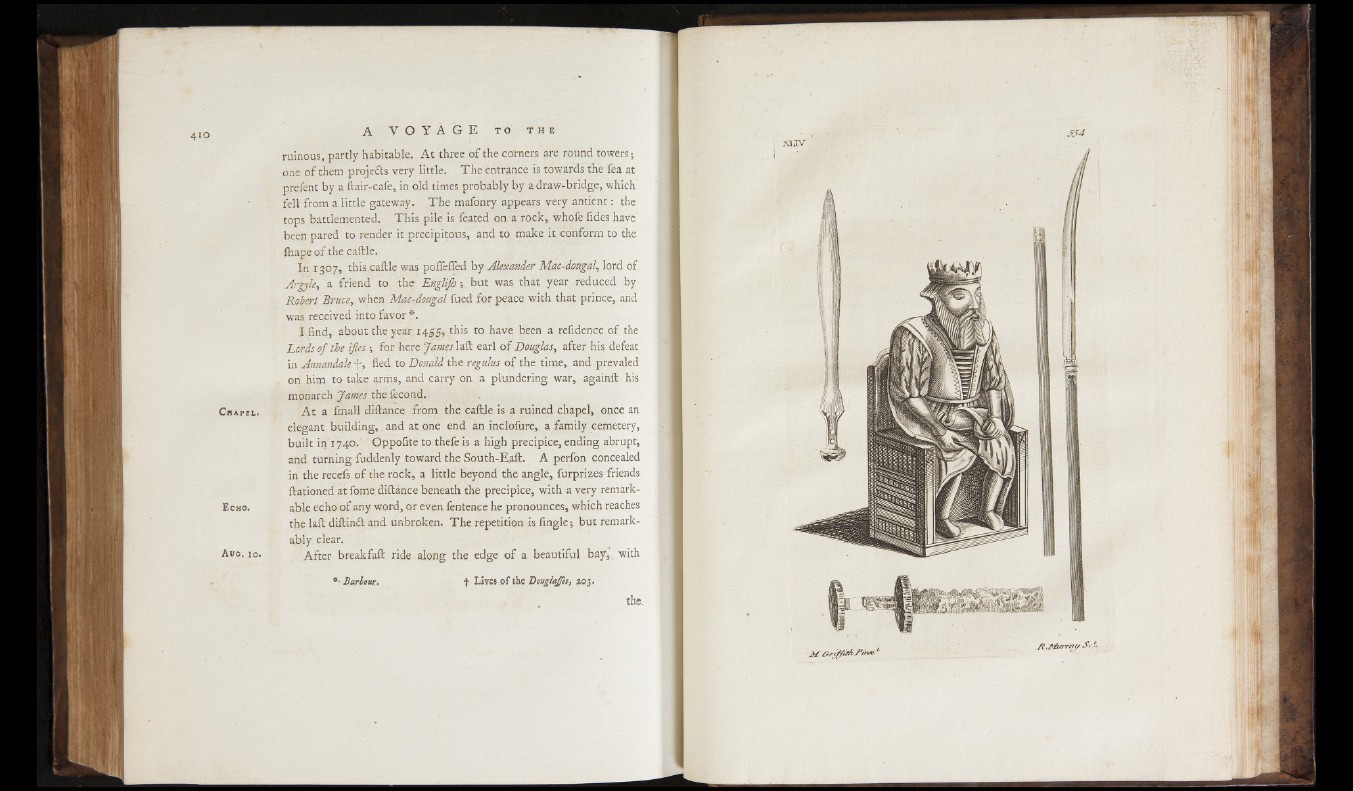
C h a p e l .
E c h o .
A u g . 10 .
ruinous, partly habitable. A t three of the corners are round towers;
one of them projedts very little. The entrance is towards the fea at
prefent by a ftair-cafe, in old times probably by a draw-bridge, which
fell from a little gateway. The mafonry appears very antient: the
tops battlemented. This pile is feated on a rock, whofe Tides have
been pared to render it precipitous, and to make it conform to the
lhape of the caftle.
In 1307, this caftle was pofleffed by Alexander Mac-dougal, lord of
Argyle, a friend to the Englijh-, but was that year reduced by
Robert Bruce, when Mac-dougal fued for peace with that prince, and
was received into favor *.
I find, about the year 1455, this to have been a refidence of the
Lords of the ijles ; for here James laft earl o f Douglas, after his defeat
in Annandale -f, fled to Donald the regulus of the time, and prevaled
on him to take arms, and carry on a plundering war, againft his
monarch James the fecond.
A t a fmall diftance from the caftle is a ruined chapel, once an
elegant building, and at one end an inclofure, a family cemetery,
built in 1740. Oppofite to thefe is a high precipice, ending abrupt,
and turning fuddenly toward the South-Eaft. A perfon concealed
in the recefs of the rock, a little beyond the angle, furprizes friends
ftationed at fome diftance beneath the precipice, with a very remarkable
echo of any word, or even fentence he pronounces, which reaches
the laft diftindt and unbroken. The repetition is fingle; but remarkably
clear.
After breakfaft ride along the edge of a beautiful bay, with
• ■ Barbour. + Lives-jof the Douglajes, 203*
the.
x iiv